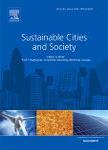版权所有:内蒙古大学图书馆 技术提供:维普资讯• 智图
内蒙古自治区呼和浩特市赛罕区大学西街235号 邮编: 010021

作者机构:Nanjing Forestry Univ Coll Landscape Architecture Nanjing 210037 Peoples R China China ENFI Engn Corp Beijing 100038 Peoples R China Nanjing Forestry Univ NFU Acad Chinese Ecol Progress & Forestry Studies Nanjing 210037 Peoples R China
出 版 物:《SUSTAINABLE CITIES AND SOCIETY》 (Sustainable Cities Soc.)
年 卷 期:2025年第120卷
核心收录:
学科分类:0820[工学-石油与天然气工程] 082803[工学-农业生物环境与能源工程] 08[工学] 0828[工学-农业工程] 0814[工学-土木工程] 0833[工学-城乡规划学]
基 金:Shanghai Municipal Government Shanghai Municipal Bureau of Planning and Natural Resources Humanities and Social Sciences Fund of the Ministry of Education [22YJA760075, 23YJCZH177]
主 题:Carbon accounting Land use Life cycle assessment (LCA) Optimization algorithm IPCC factor method Shanghai
摘 要:Comprehensive, accurate, and efficient carbon accounting is essential for formulating carbon reduction strategies and assessing their effectiveness in urban areas. However, inconsistencies in carbon accounting results in urban areas often arise due to the lack of standardized methods, making the development of a unified, convenient, and multi-scale applicable carbon accounting framework critical. Currently, urban carbon accounting based on land use encounters challenges related to functional complexity, data barriers, and issues of precision and efficiency. To address these challenges, this study considered the spatiotemporal characteristics of life cycle carbon emissions and applied the optimization algorithm from operations research to derive the optimal distribution ratios of the employment population and various industry land uses, thereby overcoming the issues of functional complexity and data barriers in urban industry land uses. The equivalency factor method was utilized to construct a transportation carbon emission table, converting ground traffic volume into equivalent passenger car units, significantly improving carbon accounting efficiency. Local carbon emission factors were employed to further enhance the accuracy of carbon accounting. Based on these approaches, a unified, standardized, and multi-scale applicable urban carbon accounting framework was developed. Using Zhoupu Town in Shanghai, China, as a case study, the carbon emissions were calculated during the construction phase and over a one-year operational period. The research findings revealed that: a) Various industry and residential land uses were the primary carbon emission sources during both the construction and operational phases, with industry land uses contributing a larger share;b) Rail transit and public green spaces demonstrated considerable carbon reduction potential during the operational phase;c) The total carbon emissions in Zhoupu Town during the construction phase were approximate